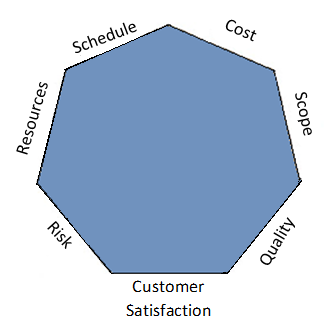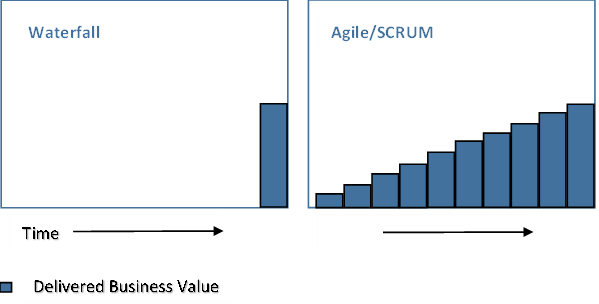Is your project successful? How do you measure it? Don’t you think that we hear this question rather often lately?
For decades, the ultimate measure of the project success was the magic triple constraint: time, cost and scope. Project managers used to apply a consistent and repeatable methodology and compliance to achieve on-time and on-budget project delivery. Over time, new important factors were recognized, so project managers had to find a way to balance the additional constraints of quality, resources, and risk in accordance with customer satisfaction.

This, however, hasn’t been easy at all. Still, these measurements and constraints were insufficient to deal with the complexity and continuous change in today’s business world. What if we deliver on-time and on-budget a product of the agreed quality that nobody needs? Would that project be successful?
No, it would not be. We have measured what is easy to measure, what we know how to measure and deal with, but if we want to survive in the new business era, we have to change something. We should become aware of the challenges and limitations of traditional project management and gain new perspectives.
To do this, we need to take care of not only financial and operational values but also the wide range of all the other values that we consider important for our organization, like strategic or innovation values. The benefit of the project, as well as its strategic and value alignment, has become crucial for the “true project success”.
How to accomplish this? Apparently, we need new skills, frameworks, approaches and new measurements that are business-related.
Since the advent of the Agile Manifesto, we have witnessed an interesting and exciting development of the relationship between traditional and agile project management. From an approach that used to be on the margins, its recognition and acceptance of mutual values helped establish strong ties with the traditional approach.
Agile practices are one of the key points of the successful benefit and value management, which is why it is very important for traditional project management to adopt them.
One of the most significant benefits of the agile principles is flexible scope management that, together with the active involvement by the business owner or stakeholders, allows us to focus on the goal of maximizing the business value and minimizing the activities that provide no added value. As you well know: “Do the things right, but do the right things too!”
Another extremely important contribution of the iterative and incremental approaches is that they allow us to measure the benefit and value continuously during the project.

And that’s not all. There are several other benefits that could help us define and measure the right values…
If we want to reap the indisputable benefits of agile practices, we need new skills; what we learned about project management 10 or 15 years ago simply won’t be enough. The technical and leadership project management skills must be enhanced with the agile frameworks and approaches such as Scrum, Kanban, Design Thinking and prototyping, and so on.
At the same time, the “old”, traditional approaches shouldn’t be neglected as they certainly still have their merit. We have to be sufficiently skilled to recognize the relevant project circumstances and we need the ability to elegantly adapt and adjust our approach to meet the specific challenges of a particular project.
According to that, junior project manager’s educational path should start with the fundamental project management education that is aligned with both predictive and agile approaches, and then followed by the previously mentioned additional specialized workshops and training.
And what about the third side of the Talent Triangle? As much as the technical project execution and leadership competencies are important perspectives of the project manager’s role, it has to go beyond that. Project managers are the ones who have (or should have) a clear picture of the strategic and business value of their projects. Whether this information is used appropriately, will depend on the involvement of project managers in the company’s management processes, as well as on the active support of the senior management. In that sense, project management is no longer considered a career path, but rather a strategic competence with an important role within the company’s business growth.
In this new professional reality, the role of the project manager has become more challenging and demanding, and the only way to keep up with the pace is to embrace a broad spectrum of different competencies. And this is possible only with continuous research, training, and education in all relevant domains focusing on the skills that we truly need. It’s not easy, but we can do it.
Want to learn more about project management? Check out our Basic Project Management Course.
Photo by Patrick Perkins on Unsplash
Falls Sie Fragen haben, sind wir nur einen Klick entfernt.


